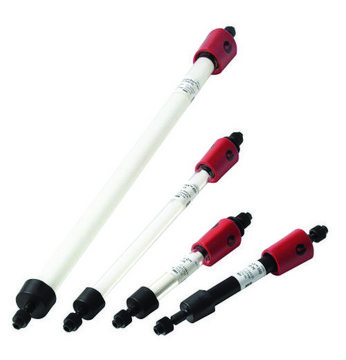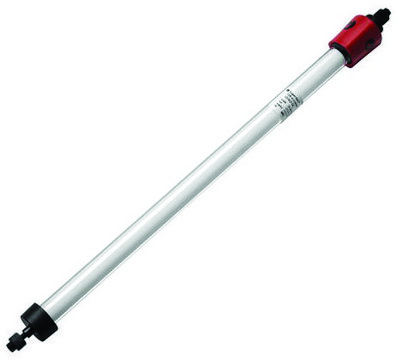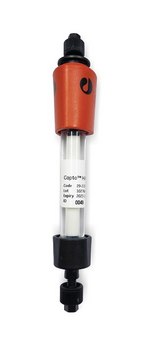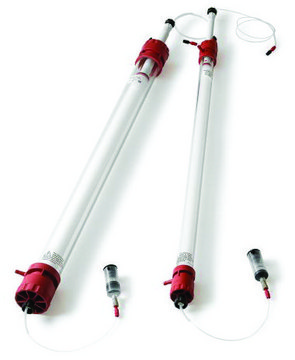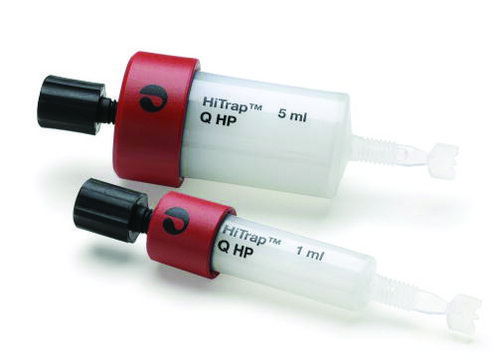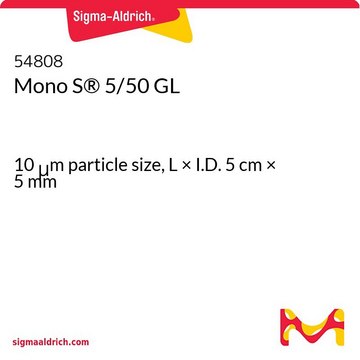54807
Mono Q® 5/50 GL
10 μm particle size, L × I.D. 5 cm × 5 mm
Synonym(s):
Amersham Biosciences Ion Exchange Columns
Sign Into View Organizational & Contract Pricing
All Photos(1)
About This Item
UNSPSC Code:
23151817
NACRES:
NA.56
Recommended Products
L × I.D.
5 cm × 5 mm
Quality Level
matrix
MonoBeads
matrix active group
quaternary amine
particle size
10 μm
compatibility
mode of use ion exchange
Looking for similar products? Visit Product Comparison Guide
General description
Mono columns are highly efficient, pH-stable columns designed for high performance ion exchange separations of proteins, peptides, and polynucleotides, in applications including peptide mapping and monoclonal antibody purification. The unique properties of these columns are based on MonoBeads support – a beaded hydrophilic material with the narrowest particle size distribution of any chromatographic support. This monodispersity permits high flow rates at relatively low backpressures.
Application
Mono columns are used in applications including peptide mapping and monoclonal antibody purification. Mono Q columns have been used to develop a method for high-resolution analysis and purification of oligonucleotide dithioates and to investigate separation of DNA restriction fragments.
Legal Information
Mono Q is a registered trademark of Cytiva
Choose from one of the most recent versions:
Certificates of Analysis (COA)
Lot/Batch Number
It looks like we've run into a problem, but you can still download Certificates of Analysis from our Documents section.
If you need assistance, please contact Customer Support.
Already Own This Product?
Find documentation for the products that you have recently purchased in the Document Library.
Xianbin Yang et al.
Analytical biochemistry, 306(1), 92-99 (2002-06-19)
A method using a strong anion-exchange liquid-chromatography column, Mono-Q, has been developed for high-resolution analysis and purification of oligonucleotide dithioates, which were synthesized by an automated, solid-phase, phosphorothioamidite chemistry. High-resolution separation of oligonucleotide phosphorodithioates from monothiophosphate impurities was obtained. High-resolution
E Westman et al.
Analytical biochemistry, 166(1), 158-171 (1987-10-01)
Separation of DNA restriction fragments by FPLC ion-exchange chromatography on Mono Q and Mono P columns was investigated. The columns were found to be particularly suitable for the separation of fragments up to 500-600 bp long. Larger fragments can also
Chromatograms
application for HPLCapplication for HPLCOur team of scientists has experience in all areas of research including Life Science, Material Science, Chemical Synthesis, Chromatography, Analytical and many others.
Contact Technical Service